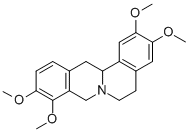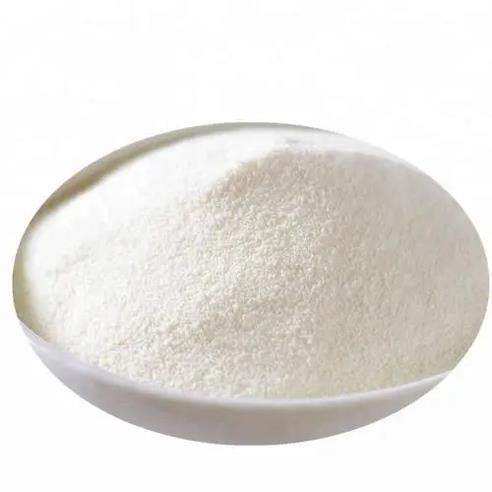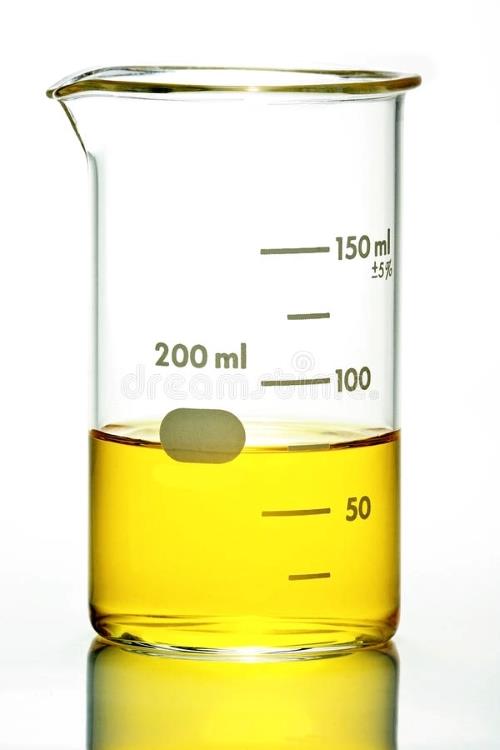Rotundine: Indication, Pharmacodynamics, Mechanism of action,Toxicity, Preparation
Indication
The Rotundine [1](C21H25NO4), also known as fumarate, that is, l-tetrahydropalmatine (l-THP), is an alkaloid extracted from the dried alkyne stem of the W.T.Wang of the poppy plant Corydalis yanhusuo, which is the main active ingredient of fumacel, with sedative, stabilizing, analgesic and central muscle relaxation effects. It is white or yellowish crystals; odorless, tasteless; It is easy to turn yellow when exposed to light and heat. The picture 1 shows the molecular formula of rotundine. It is mainly used for the treatment of dull pain, dysmenorrhea and childbirth pain relief caused by internal medical diseases. Its mechanism of action has nothing to do with opioid receptors, has no obvious addiction, and has been widely used in clinical practice as tablets and injections. With the gradual deepening of the research on the pharmacological effects of Rotundine, the scope of its clinical application has gradually expanded.
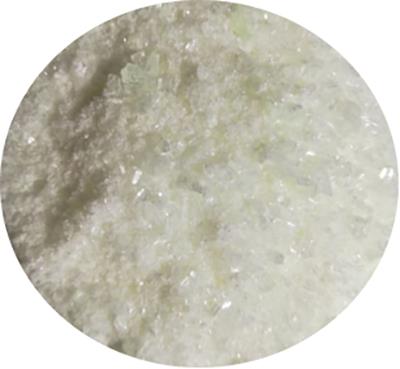
First figure the physical picture of Rotundine
Pharmacodynamics
The Rotundine is well absorbed orally and is most distributed in the body in adipose tissue, followed by lungs, liver and kidneys. Excreted mainly through the kidneys. Since then, the content of internal organs has decreased, but the content of fat has increased, which is obviously related to the fat solubility of the product. Tests from mice and rabbits show that the product easily penetrates the blood-brain barrier and enters the brain tissue, and the blood content is lower than 2 hours later.The product is most distributed in the body in adipose tissue, followed by lungs, liver and kidneys. Excreted mainly through the kidneys. Since then, the content of internal organs has decreased, but the content of fat has increased, which is obviously related to the fat solubility of the product. Tests from mice and rabbits show that the product is extreme.
Mechanism of action
The Rotundine has analgesic, sedative, hypnotic and tranquilitic effects. Its analgesic effect is weaker than pethidine and stronger than general antipyretic analgesics. There is no respiratory depressive effect at therapeutic doses, nor does it cause spasm of smooth muscle of the gastrointestinal tract. It has a good effect on chronic persistent pain and dull pain in internal organs, and has a poor effect on acute pain and advanced cancer pain. While producing analgesic effects, it can cause sedation and hypnosis. The mechanism of action of this product has yet to be elucidated, which may be related to the upward activation of the system and blocking the function of dopamine receptors in the brain by inhibiting the brainstem reticular structure. The amount of treatment is non-addictive. It is easy to penetrate the blood-brain barrier and enter the brain tissue, and the concentration appears higher within a few minutes, but decreases after 30 minutes, and is lower than the blood content after 2 hours. Analgesia is the most important pharmacological effect of rotundine, and the study found that rotundine is a central dopamine receptor blocker, and after body absorption, it strengthens the function of the brainstem descending pain modulation system by blocking the D2 receptors of the striatum and nucleus accumbens, and inhibits the affection of peripheral pain information at the spinal cord level through the PAG-Rcl-spinal dorsal horn nerve pathway, thereby exerting a strong analgesic effect. At the same time, it can increase the messenger RNA expression of encephalitin and endorphin related to pain perception, and promote the release of enkephalins and endorphins.[2,3]
Toxicity
The general adverse effects of rotundine include nausea, dizziness, fatigue, dizziness, vomiting, and chest tightness, and extrapyramidal symptoms may occur when the dose is too large. Adverse effects in this section are occasionally found. Generally, it does not cause serious consequences and can be alleviated on its own. It has also been reported that rotundine causes more serious adverse reactions in clinical applications. [4]
Preparation
The second figure shows the preparation of rotundine[5]. First, 3N of resorcinol was slowly added to 60% sulfuric acid solution, 100g of pibase was slowly introduced into the reaction solution, and the reaction was carried out at a temperature of 95 ℃, and the reaction solution was introduced into the same amount of water and stirred for 2 h. Filter the filter cake, and then dissolve the filter cake into absolute ethanol (1g: 10 ml absolute ethanol) and heat and stir for a period of time, heat filter, and collect the filter cake. Monohydrate was obtained by dissolving Rotundine completely in the mixing solution of 2 volume acetone and 1 volume water, then recrystallizing at the constant temperature of 10 ℃ for about 10 days. The anhydrous form was prepared by dissolving Rotundine completely in ethyl acetate, then recrystallizing at the constant temperature of 10 ℃ for about 5 days. For convenience of description, anhydrous form and monohydrate of Rotuntine are represented by Form I and II respectively.

Second figure Preparation of Rotundine
Reference
[1] Du YD, Zhao YZ. Research progress on pharmacological effects and clinical application of rotundine[J]. Northwestern Journal of Pharmacy, 2012,27(01):91-94.
[2] Hu JY, Jin GZ. Supraspinal D2 receptor involved in antinociception induced by l-tetranydropalmatine[J]. Acta Pharmacologica Sinica.1999,20(8)715-719.
[3] Hu JY, Jin GZ. Effect of tetrahydropalmatine analogs on Fos expresion induced by formalin-pain[J]. Acta Pharmacologica Sinica.199,20(3).193-20.
[4] Xie TQ . Rotundine anaphylactic shock: one case[J].Chinese Journal of Clinical Pharmacy,2005,14(5):318-318.
[5] Yang S Y, Du G H, Lu Y. Characterization of a new anhydrous form of Rotundine and its monohydrate [J]. Journal of Molecular Structure, 2015, 1095: 79-86.
Related articles And Qustion
Lastest Price from Rotundine manufacturers
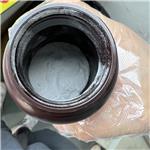
US $1.00/g2025-11-03
- CAS:
- 10097-84-4
- Min. Order:
- 300g
- Purity:
- 99.8%
- Supply Ability:
- 20 TONS

US $5.00-0.50/KG2025-05-08
- CAS:
- 10097-84-4
- Min. Order:
- 1KG
- Purity:
- 99% hplc
- Supply Ability:
- 500TONS
